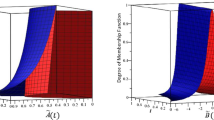Abstract
In this paper, we demonstrate that the fuzzy pricing model can improve regression analysis in applications where non-smoothness appears. Combining the fuzzy and regression approaches it is capable of modelling complex non-linearities. The application of this approach describes an effort to design a regression-fuzzy system to estimate real estate market values, especially for vacant urban plots. The results are compared with those obtained using a traditional multiple regression model only. The changes of parameters in the domain of independent variables of the regression function are determined by the analysis of membership functions defining the terms of the fuzzy model. The paper also describes possible future research. The suggested method is interesting for real estate appraisers, real estate companies, and bureaus because it provides a better overview of location prices. The suggested approach could be also used in various other economic and business analyses.
Similar content being viewed by others
References
Aragones-Beltran P, Aznar J, Ferris-Onate J, Garcia-Melon M (2008) Valuation of urban industrial land: an analytic network process approach. Eur J Oper Res 185(1): 322–339
Bee-Hua G (2002) Evaluating the performance of combining neural networks and genetic algorithms to forecast construction demand: the case of the Singapore residential sector. Constr Manag Econ 18(2): 209–217
Bogataj L, Bogataj M, Drobne S, Vodopivec R (2004) The influence of investments in roads and border crossing capacities on regional development after accesion. Suvremeni Promet 24(5/6): 379–387
Bogataj M, Bogataj L, Drobne S (2009) Lowry-like model for the evaluation of new university or college location and the influence of transportation time spending distance. Suvremeni Promet 29(1/2): 96–100
Bogataj M, Drobne S (2005) Does the improvement of roads increase the daily commuting? Numerical analysis of Slovenian interregional flows. In: Zadnik Stirn L, Indihar Stemberger M, Ferbar L, Drobne S (eds) Selected decision support models for production and public policy problems (SDI-SOR series, no. 3). Ljubljana, Slovensko drustvo Informatika, Sekcija za operacijske raziskave, Slovenian Society Informatika, Section of Operational Research, pp 185–206
Byrne P (1995) Fuzzy analysis: a vague way of dealing with uncertainty in real estate analysis. J Property Valuation Invest 13(3): 22–41
Do Q, Grudnitski G (1992) A neural network approach to residential property appraisal. Real Estate Appraiser 58: 38–45
Furukawa M, Yamakawa T (1995) The design algorithms of membership functions for a fuzzy neuron. Fuzzy Sets Syst 71(3): 329–343
Guan J, Zurada J, Levitan A (2008) An adaptive neuro-fuzzy inference system based approach to real estate property assessment. J Real Estate Res 30(4): 395–421
Tamaki F, Kanagawa A, Ohta H (1992) Estimation of population distribution based on fuzzy observation data. Jap J Fuzzy Theory Syst 4: 301–307
Tamaki F, Kanagawa A, Ohta H (1998) Identification of membership functions based on fuzzy observation data. Fuzzy Sets Syst 93(3): 311–318
Zhu AX, Yang L, Li B, Qin C, Pei T, Liu B (2009) Construction of membership functions for predictive soil mapping under fuzzy logic. Geoderma, Corrected Proof. Available online 21 June 2009 (in Press)
Author information
Authors and Affiliations
Corresponding author
Rights and permissions
About this article
Cite this article
Bogataj, M., Tuljak Suban, D. & Drobne, S. Regression-fuzzy approach to land valuation. Cent Eur J Oper Res 19, 253–265 (2011). https://doi.org/10.1007/s10100-010-0188-x
Published:
Issue Date:
DOI: https://doi.org/10.1007/s10100-010-0188-x




